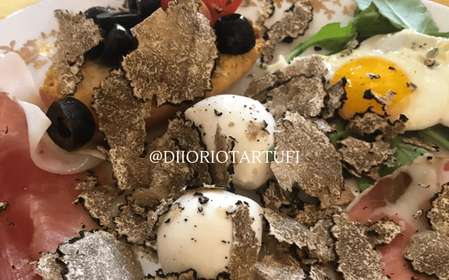- Home
- Useful Tips
- Where to purchase authentic...
Finding authentic local crafts in Campobasso proves challenging for many visitors. Over 60% of travelers report dissatisfaction with mass-produced 'local' souvenirs, according to a recent Italian tourism survey. The frustration runs deeper than wasted money – it's about missing genuine connections to Molise's rich artisanal traditions. Between language barriers, hidden workshops, and market timing nuances, even well-intentioned shoppers often settle for inauthentic items. This disconnect leaves travelers with generic trinkets instead of meaningful mementos that reflect Campobasso's true cultural heritage. The problem compounds when limited vacation time collides with the hunt for quality craftsmanship.


Why most tourist shops don't sell real Campobasso crafts
The picturesque storefronts near Campobasso's main squares often prioritize convenience over authenticity. Many import lookalike ceramics from outside Molise region, capitalizing on visitors' tight schedules. True local artisans typically operate smaller workshops in residential areas or nearby villages, preserving techniques passed through generations. These creators focus on quality rather than volume, using regional materials like Montagano clay or Apennine wool. Recognizing the difference starts with examining materials – authentic Campobasso pottery feels heavier with subtle imperfections, while mass-produced items appear flawless but lack character. Another telltale sign involves pricing; handmade copperware or bobbin lace requires hours of skilled labor, so suspiciously low costs often indicate imports.
Three hidden workshops only locals know about
Venture beyond the historic center to discover artisans keeping Campobasso's traditions alive. Ceramica Di Paolo, a third-generation pottery studio in Ripalimosani, welcomes visitors by appointment to observe traditional firing techniques. Their distinctive geometric patterns derive from 19th-century Molise designs. For exquisite wool goods, seek out Laboratorio Lana in Campobasso's San Giovanni district, where the Mastrodomenico family crafts blankets using antique looms. The faint lanolin scent confirms their pure local wool. Metalworkers at Bottega del Rame near Villa dei Cannoni demonstrate century-old copper hammering methods – their hand-tooled cookware makes exceptional functional souvenirs. These workshops don't advertise widely, so calling ahead ensures you'll catch them during production hours.
Timing your visit to catch seasonal craft markets
Campobasso's most authentic shopping experiences align with traditional agricultural and religious calendars. The Mercato della Lana in late October transforms Piazza Prefettura into a wool enthusiast's paradise, with shepherds and weavers from across Molise. Spring brings the Mostra dell'Artigianato during Easter week, where potters demonstrate outdoor kiln techniques near the Monforte Castle. For year-round access, the weekly Wednesday market along Via Roma includes a dedicated artisan section behind the fruit vendors. Arrive before 10am to watch craftspeople set up – early birds often snag one-of-a-kind pieces before crowds arrive. These events provide rare opportunities to meet creators personally, hear family stories behind each craft, and occasionally commission custom pieces.
How to verify authenticity before purchasing
Discerning genuine Campobasso crafts involves engaging multiple senses. Authentic ceramics feature a characteristic matte glaze on the base where it touched kiln shelves during firing. Run your fingers along embroidery – Molise linen thread creates slight ridges unlike smooth synthetic alternatives. Smell wooden items; locally carved olive wood releases a faint nutty aroma when warmed in your hands. Don't hesitate to ask artisans for their 'marchio' – many stamp or sign pieces with distinctive marks. The Molise region's official 'Artigianato Artistico' certification label guarantees origin, though some traditionalists consider their work too personal for bureaucratic validation. When language barriers arise, pointing to workshop tools or raw materials often sparks enthusiastic demonstrations that confirm a piece's provenance.
